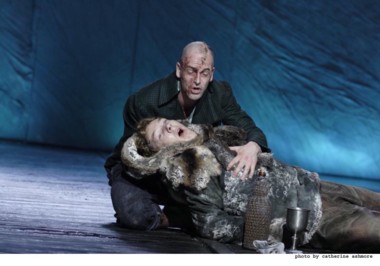When I wrote my first CinemaDope column—almost seven years ago now—it was with the thought that I’d be using my corner of the Advocate to cover film in and around the Valley. And by and large, that’s what I’ve done; there has never been a shortage of great cinema in our part of the state, and in fact, the hardest part of my job is simply deciding what to feature in any given week.
At the same time, the movie industry has changed tremendously since then. About a month before that first column, Netflix delivered its billionth DVD by mail (it was Alejandro González Iñárritu’s film Babel, trivia buffs), but it also launched an early incarnation of its streaming service, which would go on to change the way we watch movies at home. With the company’s streaming offerings, the home television screen became democratized. With such a wide range of material available (since it no longer had to send a physical disc, the company could serve up ever more esoteric choices), it was easier than ever for viewers to sample not just the big hits of the day but also the hard-to-find documentaries, television programs and niche films that might have previously gone unseen.
It was a revolution whose reverberations are still being felt, and one of the perhaps unintended side effects has been the reinvention of the traditional movie house. Before streaming hit it big (yardstick: my mom uses it now), theaters were mostly places where we saw movies. After streaming, they slowly rediscovered their roots as community gathering places that offered more than just matinee idols and idles, and something you couldn’t find from your living room couch.
And so today we have theaters that show boxing matches and concerts, or host Q&A sessions over Skype with a far-off director. They are still, mostly, about a big screen and a dark room, but the idea of what gets shown on that screen has exploded, and we’re all better for it.
So it is that this week you can catch two grand stage presentations from London’s National Theatre on area screens, beamed across the Atlantic and into your local movie house. First up is War Horse, a riveting story that travels from rural England to the trenches of World War I, showing on Cinemark screens Thursday, Feb. 27. For those who doubt that a live production can succeed without live horses, the life-sized puppets by South Africa’s Handspring Puppet Company will surely change your mind.
But for film fans, the bigger draw will likely be the NT production of Frankenstein, screening on March 3 at Amherst Cinema. Directed by acclaimed director Danny Boyle (Slumdog Millionaire, Trainspotting), the new play stars two actors who’ve played Sherlock Holmes—actors Benedict Cumberbatch (BBC’s Sherlock) and Jonny Lee Miller (CBS’ Elementary) take turns portraying the Doctor and the Creature, with each version shown on different nights. (This one features Cumberbatch as the Creature; Miller takes over for the March 24 broadcast, which will also be shown locally.) The switch is not just an actor’s parlor trick: while the script remains the same across the versions, the production, staging and interpretation change depending on which actor is in which role, and seeing both adds a level of depth to the work’s themes of duality and transformation.
It’s likely that in another seven years we’ll have gone through still another transformation ourselves; exactly what the cinematic universe will look like then, I can’t say. One thing is for sure: I don’t think we’ll ever want to give up the feeling of group experience that we can find in a darkened theater.
Our notion of the movies might change—already it seems to make more sense to simply think of “the screen” rather than “the movies”—but what it is that brings us there, likely, will not. And in the end, it is not any one movie that I write about in any given week; it is that feeling of togetherness, and wonder, and mystery. Whatever it is that is caught up in the light, it’s what’s in the dark that matters most.•
Jack Brown can be reached at cinemadope@gmail.com.



